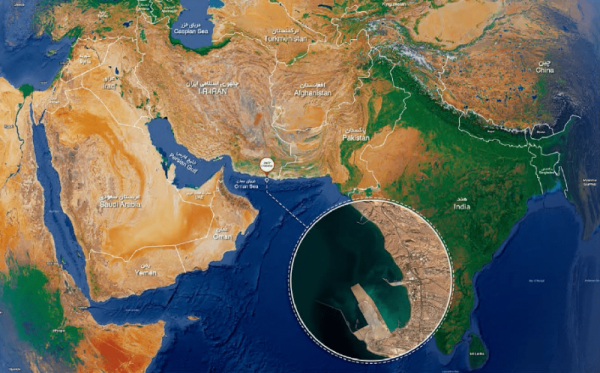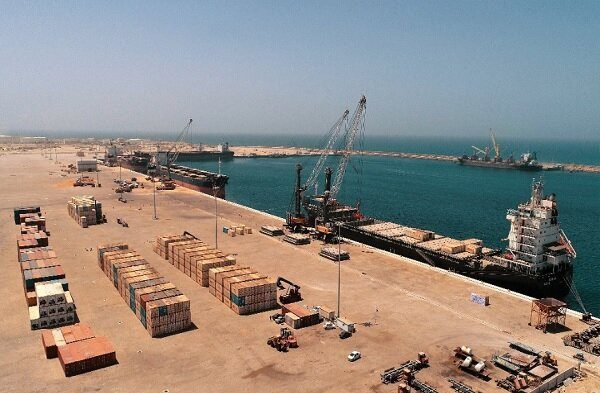- info@farmad.co
- Sat - Wed: 8:00 - 16:00 - Thu: 8:00 - 12:00
Chabahar Port
Chabahar Port is a seaport in Chabahar located in southeastern Iran, on the Gulf of Oman. It serves as Iran’s only oceanic port and consists of two separate ports named Shahid Kalantari and Shahid Beheshti, each of which has five berths.
The development of the port was first proposed in 1973, but the first phase of the port was opened in 1983.
In May 2016, Iran and India signed a bilateral agreement in which India would refurbish one of the berths at Shahid Beheshti port, and reconstruct a 600-meter long container handling facility at the port. The port is partly intended to provide an alternative for trade between India and Afghanistan as it is 800 kilometers closer to the border of Afghanistan than Pakistan’s Karachi port. The port is planned to be upgraded to handle 86 million tons in the future.
In October 2017, India’s first shipment of wheat to Afghanistan was sent through the Chabahar Port. In December 2018, India took over the port’s operations.
The port of Chabahar is located on the Makran coast of Sistan and Baluchistan Province, next to the Gulf of Oman and at the mouth of the Strait of Hormuz. It is the only Iranian port with direct access to the Indian Ocean. Being close to Afghanistan and the Central Asian countries of Turkmenistan, Uzbekistan, and others, it has been termed the “Golden Gate” to these landlocked countries.
Chabahar is 700 km (430 mi) away from Zahedan, the capital of the Sistan and Baluchistan province, 950 km (590 mi) away from Milak, the closest city to the Afghan border, and 1,827 km (1,135 mi) away from Sarakhs on the Turkmen border.
The marine distance to Dubai is 353 nautical miles (654 km; 406 mi), and to Mundra, India is 626 NMI (900 km; 560 mi).
Because 90 percent of Iran’s population is concentrated in the western part of the country, the eastern part is relatively less developed. Iran is intending to change that with the development around Chabahar port, with a free trade zone and road and rail links between Chabahar and Central Asia. Its plan is to use Chabahar port as the gateway to Central Asia and to maintain the Bandar Abbas port, which currently handles 85% of Iran’s seaborne trade, as a hub for trade with Russia and Europe.
The highly congested Bandar Abbas port is not a deep water port and cannot handle the 250,000-ton oceangoing cargo ships. At present, such ships dock in the United Arab Emirates (UAE) and the cargo is transferred to smaller, 100,000-ton ships for onward shipment to Iran. This makes Iran dependent on the UAE for shipments and represents a loss of revenue. Unlike Bandar Abbas, Chabahar has the ability to handle cargo ships with maximum capacity.
Iran has taken the initiative to engage with all the neighboring countries to enhance the transit potential of Chabahar. It has signed a memorandum of understanding (MoU) with Afghanistan and Tajikistan on the construction of railway lines, water pipelines, and energy transmission lines. It has been keen to extend the Khvaf-Herat rail line to connect to the railways of Central Asia, Turkey, and Europe. It has entered into an agreement with Oman, Qatar, Turkmenistan, and Uzbekistan to establish a transport corridor between these countries. Iran is also a key partner in the International North-South Transport Corridor (INSTC) along with Russia, Ukraine, Turkey, Oman, Syria, India, and the Central Asian countries, which aims to connect South and Central Asian countries to Northern Europe via Iran and Russia. Specifically, with respect to Chabahar, Iran has envisioned it as a key port in linking India with Afghanistan and Central Asian countries. Initiatives in this regard include a roadway from Chabahar to Milak on the Afghanistan border, Chabahar-Faraj-Bam railway, Chabahar-Zahedan-Mashhad rail link, which will be further extended to Herat and Mazar-e-Sharif in Afghanistan and Termez in Uzbekistan.
In May 2016, India also signed a series of twelve memoranda of understanding which centered upon the Port of Chabahar.
The trilateral transit agreement signed by India, Iran, and Afghanistan allows Indian goods to reach Afghanistan through Iran. It links ports on the western coast of India to the Chabahar port and covers the road and rail links between Chabahar and the Afghan border.
The bilateral agreement between India and Iran gives India the right to develop two berths of the Chabahar port and allows them to be operated for 10 years by India Ports Global, a joint venture between Jawaharlal Nehru Port Trust and Kandla Port Trust, in partnership with Iran’s Aria Banader. India Ports Global aims to eventually handle 250,000 TEUs.
The berths will be developed at a cost of $85 million over the course of 18 months. Under the agreement, India Ports Global will refurbish a 640 meters (2,100 feet) long container handling facility, and reconstruct a 600 meters (1,970 feet) long container handling facility at the port. India Ports Global will modernize ancillary infrastructure by installing four rail-mounted gantry cranes, sixteen rubber-tire gantry cranes, two reach stackers, two empty handlers, and six mobile harbor cranes. Upon completion of upgrade works agreed to in the May 2016 agreements, Chabahar’s capacity will be increased to 8 million tons from the current 2.5 million ton capacity.
The investment is supplemented with a $150 million credit line to Iran through the Exim Bank of India. India has also offered to supply $400 million worth of steel towards the construction of a rail link between Chabahar and Zahedan. Indian commitments to Iranian infrastructure could total $635 million as per the twelve memoranda of understanding signed in May 2016.
Afghanistan has almost no functioning railways, where there is less than 25 km of track in the entire country. The Afghan section of the Khaf-Herat railway built with Iran includes 114 km of the track which will open a new chapter in domestic freight and passenger transportation. It will reduce the cost of moving goods across the region to a fraction of that of highway transport.
The railway will stretch to Chabahar in southeastern Iran, boosting Afghanistan’s trade and bringing in its mining sector from the cold to exploit billions of dollars in untapped mineral reserves.
Sources:


